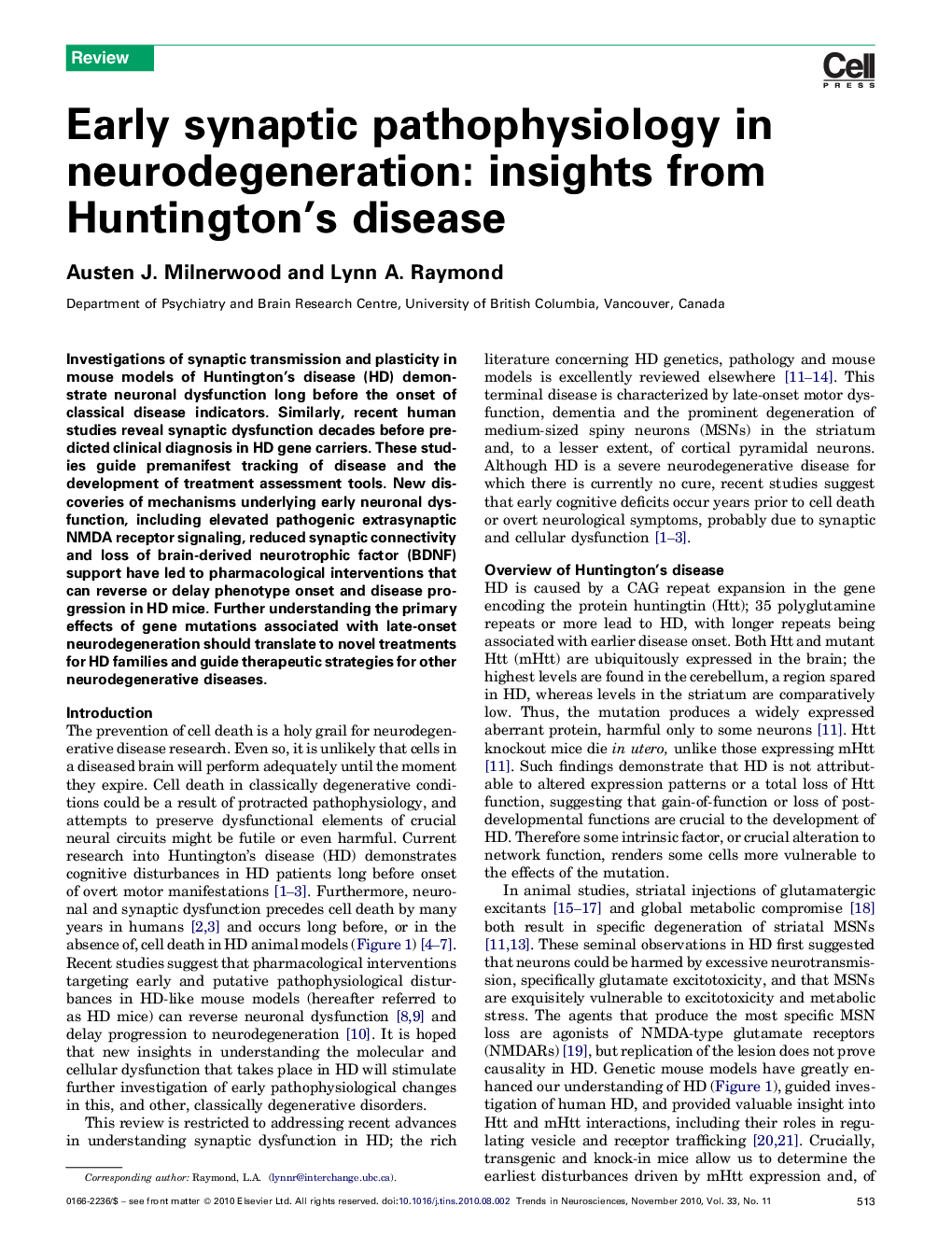| Article ID | Journal | Published Year | Pages | File Type |
|---|---|---|---|---|
| 4354500 | Trends in Neurosciences | 2010 | 11 Pages |
Investigations of synaptic transmission and plasticity in mouse models of Huntington's disease (HD) demonstrate neuronal dysfunction long before the onset of classical disease indicators. Similarly, recent human studies reveal synaptic dysfunction decades before predicted clinical diagnosis in HD gene carriers. These studies guide premanifest tracking of disease and the development of treatment assessment tools. New discoveries of mechanisms underlying early neuronal dysfunction, including elevated pathogenic extrasynaptic NMDA receptor signaling, reduced synaptic connectivity and loss of brain-derived neurotrophic factor (BDNF) support have led to pharmacological interventions that can reverse or delay phenotype onset and disease progression in HD mice. Further understanding the primary effects of gene mutations associated with late-onset neurodegeneration should translate to novel treatments for HD families and guide therapeutic strategies for other neurodegenerative diseases.
